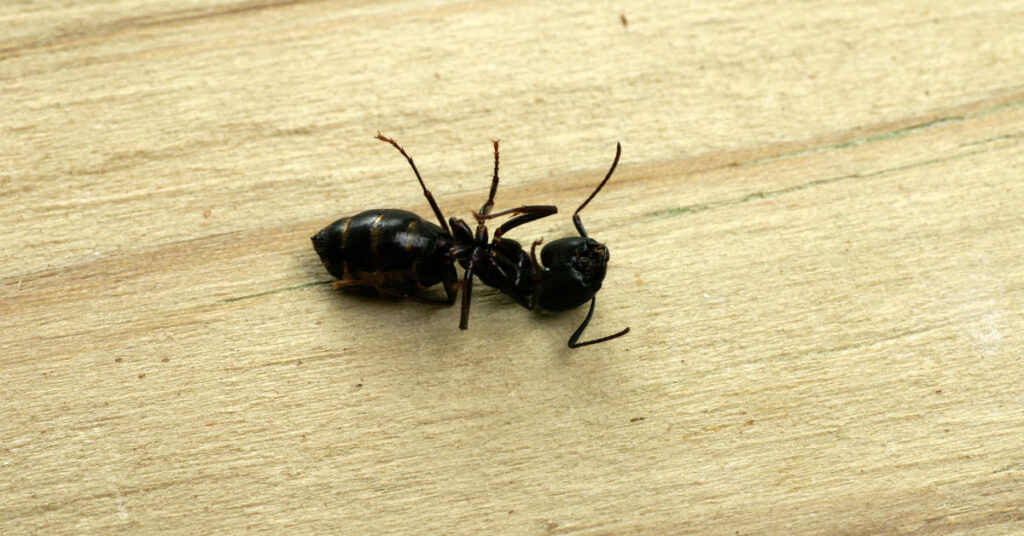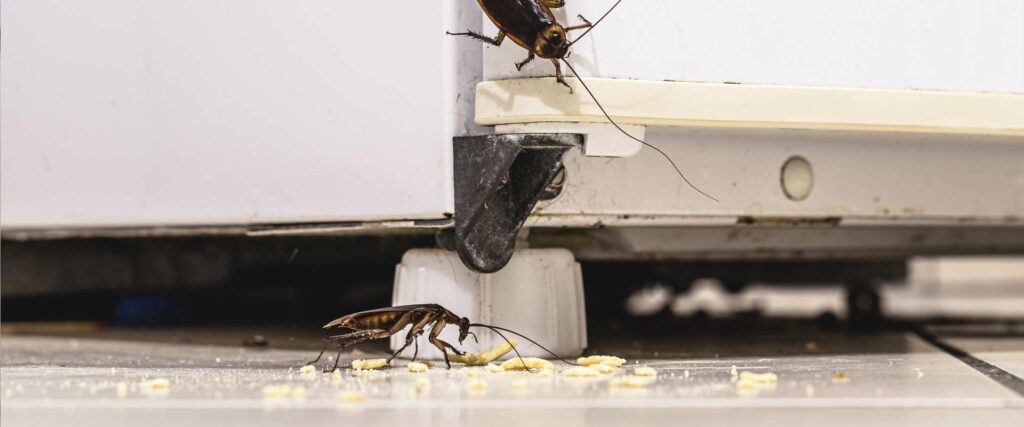Ant infestations can be a significant nuisance and a common problem faced by homeowners and businesses alike. These tiny pests can infiltrate our living spaces, contaminate food, and cause damage to structures. Dealing with ant infestations requires a proactive and effective approach to ensure their eradication and prevent future occurrences. In this article, we will explore various methods of ant control to provide you with a comprehensive understanding of different approaches and their effectiveness.

In our investigation of ant control methods, we will focus on four key approaches: borax, diatomaceous earth, ant sprays, and bait stations. These methods have gained popularity for their effectiveness in managing ant infestations. Each method works in a unique way, targeting ants at different stages of their life cycle or disrupting their foraging patterns. By understanding how these methods work and their advantages and limitations, you will be better equipped to choose the most suitable approach for your specific ant problem.
Borax – A Potent Ant Killer
What is Borax?
Borax is a naturally occurring mineral compound consisting of boron, sodium, oxygen, and water. It is commonly used in household cleaning products and has proven to be an effective tool in ant control. Borax works by interfering with ants’ digestive systems, ultimately leading to their demise. When ants consume borax, it disrupts their metabolism and causes dehydration, leading to their death. Additionally, borax acts as a slow-acting poison, allowing ants to carry it back to their colony and distribute it to other members, including the queen, effectively controlling the entire ant population.
-
Borax is a natural compound used for ant control.
-
Ant sprays are instantly effective and widely available.
-
Bait stations are effective and convenient to use indoors or outdoors.
Effectiveness of Borax on Ant Control
Borax has shown significant effectiveness in eliminating large ant colonies. The slow-acting nature of borax allows for a domino effect within the ant colony. As worker ants bring the borax-laced bait back to the nest, it gradually spreads to other ants, including the queen. This ensures that the entire colony is targeted, leading to its eventual collapse. However, it’s important to note that the effectiveness of borax depends on factors such as the size of the colony, the type of ants, and their foraging habits. Patience and persistence are key when using borax to tackle large ant infestations.
Risks and Dangers of Borax
While borax is generally safe when used properly, it is essential to be aware of the potential risks and take necessary precautions. Firstly, it can be toxic if ingested in large quantities, so it is crucial to keep it out of reach of children and pets. Following the recommended guidelines for application and avoiding excessive use is important to prevent the risk of toxicity. Additionally, care should be taken to prevent contamination of food or food preparation surfaces when using borax in the kitchen. Individuals with respiratory conditions or sensitivities should consider using protective gear like gloves and masks to minimize exposure to the fine powder. It is also important to be mindful of the environmental impact and use borax responsibly, avoiding excessive use and preventing runoff into water sources. Consulting with a professional pest control service can provide further guidance and recommendations for safe and effective ant control. By being aware of these risks and taking necessary precautions, you can use borax as an effective tool in managing ant infestations while prioritizing the safety of your household and the environment.
How to Use Borax for Ant Control
By following these steps and using borax bait properly, you can effectively target ant colonies and control their population within your home or property. Remember to exercise caution, patience, and consistent monitoring to achieve the desired results.
- Prepare the bait mixture: In a container, mix borax with sugar and water. The sugar will attract the ants, while the borax acts as a toxic agent.
- Locate ant activity areas: Identify where ants are commonly seen, such as along their trails or near entry points into your home.
- Place the bait: Carefully place small amounts of the bait mixture in these areas. Avoid disturbing the ants’ natural foraging patterns to allow them to discover the bait.
- Monitor and replenish: Regularly check the bait and replenish it as needed. Ants will carry the bait back to their colony, spreading it to other ants and effectively controlling the population.
- Be patient: It may take some time for the bait to take full effect. Patience is important as the ants need to consume the bait and distribute it throughout the colony.
- Maintain cleanliness: While using borax bait, ensure your surroundings are clean and free from other food sources that may divert the ants’ attention.
- Reapply as necessary: If the ant activity persists, continue applying the borax bait until the infestation is under control. Regularly monitor the effectiveness of the treatment.
- Safety precautions: Keep the bait out of reach of children and pets to prevent accidental ingestion. Consider placing the bait in enclosed containers or using bait stations for added safety.
-
Best Overall
 Save $50 on your first recurring service today with code GET50
Save $50 on your first recurring service today with code GET50 -
Best for Termites
 Save $50 on pest control services with code SAVE50 at checkout
Save $50 on pest control services with code SAVE50 at checkout -
Best for Bed Bugs
 Get a free estimate on pest control services for your home
Get a free estimate on pest control services for your home -
Best for Wildlife Removal
 Call For A Fast & FREE Phone Estimate Today
Call For A Fast & FREE Phone Estimate Today -
Best for Natural Treatment
 Get $100 Off Your Termite Treatment Service
Get $100 Off Your Termite Treatment Service
Diatomaceous Earth – A Natural Ant Killer
What is Diatomaceous Earth?
Diatomaceous earth is a fine powder made from the fossilized remains of diatoms, which are a type of algae. It is a popular natural method for ant control due to its abrasive properties. When ants come into contact with diatomaceous earth, the powder adheres to their bodies, causing microscopic cuts and scratches. These abrasions lead to moisture loss, dehydration, and ultimately, the death of the ants. One of the main benefits of diatomaceous earth is that it is non-toxic to humans and pets, making it a safe option for ant control.
What Ants Does Diatomaceous Earth Work Against?
Diatomaceous earth is known to be effective against a wide range of ant species. It can be used to control and eliminate common household ants such as pavement ants, carpenter ants, odorous house ants, Argentine ants, and pharaoh ants. These ant species are susceptible to the abrasive nature of diatomaceous earth, which damages their exoskeletons and causes dehydration, ultimately leading to their demise. However, it is important to note that the effectiveness of diatomaceous earth may vary depending on the specific ant species and their individual adaptations. Ant species with thicker exoskeletons or unique biological characteristics may exhibit varying levels of susceptibility to diatomaceous earth. Therefore, proper identification of the ant species and consultation with pest control professionals can help determine the most effective treatment approach for specific ant infestations.
Safety of Diatomaceous Earth
When used properly, diatomaceous earth is considered safe to use around pets and children. However, it is important to take precautions to minimize exposure. While diatomaceous earth is non-toxic, it is a fine powder, and inhalation of large amounts of dust can irritate the respiratory system. It is advisable to use protective equipment, such as masks and gloves, during the application process. Additionally, it is recommended to apply diatomaceous earth in areas where pets and children have limited access, such as cracks, crevices, and behind appliances.
How to Use Diatomaceous Earth
To effectively apply diatomaceous earth for ant control, it should be sprinkled in areas where ants are active, such as along ant trails, entry points, and near their nests. The powder should be spread thinly and evenly, ensuring that ants come into contact with it. Diatomaceous earth should be reapplied as needed, especially after rainfall or when the powder becomes damp, as moisture reduces its effectiveness. Regular monitoring is important to determine the success of the treatment and to reapply as necessary.
Side Effects of Diatomaceous Earth
While diatomaceous earth is generally safe and effective for ant control, there are some potential side effects and drawbacks to consider. Due to its abrasive nature, diatomaceous earth may cause skin irritation or dryness if directly applied to the skin. Inhalation of excessive amounts of powder can irritate the respiratory system, so it is important to handle it carefully and minimize dust formation during application. Additionally, diatomaceous earth is primarily effective in dry environments, as moisture can reduce its cutting action. If you are dealing with a severe or persistent ant infestation, it is recommended to consult with pest control professionals who can provide tailored solutions and address any specific concerns you may have.
Ant Sprays – Instant Killers with a Punch
How Do Ant Sprays Work?
Ant sprays are insecticides specifically formulated to kill ants upon contact. They contain active ingredients that target the nervous system of ants, leading to paralysis and eventual death. When sprayed directly on ants or their trails, the insecticide quickly immobilizes the ants, effectively eliminating them. Ant sprays provide immediate results, making them a convenient option for dealing with visible ant infestations.
Active Ingredients in Ant Sprays
Commonly used active ingredients in ant sprays include pyrethroids, such as permethrin or bifenthrin, which are typically present in concentrations ranging from 0.1% to 0.5%. These pyrethroids target the nervous system of ants and other insects, disrupting their normal nerve cell function. The specific formulation and concentration of the active ingredients may vary among different ant spray brands, so it is important to select a spray that is labeled for ant control and approved for the intended indoor or outdoor use. By following the instructions provided by the manufacturer, including the recommended application method and frequency, you can ensure the optimal effectiveness of the ant spray in eliminating ants from your surroundings.
Effectiveness of Ant Sprays
Most ant sprays can effectively kill ants upon immediate application. The long-term effectiveness of ant sprays typically lasts for a short period after application. Once sprayed, the insecticide remains active for a certain duration, usually a few hours to a few days. However, the effectiveness can vary depending on factors such as the specific brand, formulation, and environmental conditions. It is important to read the product label and follow the manufacturer’s instructions regarding the duration of effectiveness to ensure optimal results.
Risks and Concerns of Ant Sprays
When using ant sprays indoors, it is essential to consider any risks or health concerns associated with their use. Some ant sprays may contain chemicals that can irritate the respiratory system or cause skin irritation. It is crucial to use ant sprays in well-ventilated areas, avoid direct contact with the skin, and follow the safety precautions provided by the manufacturer. Additionally, it is advisable to keep pets and children away from treated areas until the spray has dried completely to minimize any potential risks.
Outdoor Sprays for Ant Control
Ant sprays can also be used outdoors as a part of ant control measures. When applying ant sprays outdoors, it is important to consider their potential impact on the environment and other beneficial insects. Care should be taken to avoid spraying directly on plants, water sources, or areas frequented by wildlife. It is advisable to target specific ant trails, entry points, or nesting sites to minimize the impact on non-target organisms.
Residual Effects of Ant Sprays
Ant sprays generally leave minimal residual effects on surfaces when used as directed. However, it is important to avoid spraying ant sprays on surfaces where food is prepared or consumed. Surfaces should be cleaned after treatment to remove any chemical residues. If using ant sprays on porous surfaces, such as wood or fabric, it is advisable to test a small inconspicuous area beforehand to ensure compatibility and prevent any potential damage.
Bait Stations – Stealthy But Deadly
How Do Bait Stations Work?
Bait stations consist of a container or station that holds a toxic bait specifically formulated to attract ants. The bait is designed to be enticing to ants, who then consume it and carry it back to their colony, where it is shared with other ants, including the queen. This method of control ensures that the entire ant population is targeted, leading to the gradual elimination of the colony.
What Attracts Ants to Bait Stations?
The attractiveness of bait stations to ants lies in the composition of the bait. The bait is typically made up of a combination of food attractants, such as sugars or proteins, and a slow-acting insecticide. The sweet or protein-based bait mimics the ants’ natural food sources, making it highly appealing to them. The presence of these attractive food sources entices the ants to feed on the bait, leading to its ingestion and subsequent distribution within the colony.
How Long Does it Take Bait Stations to Work?
Generally, it may take several days to a few weeks for the bait to eliminate an entire ant colony. The timeline for bait stations can vary depending on several factors, including the size of the colony, the type of ant species, and the effectiveness of the bait. During this time, ants will continue to feed on the bait and carry it back to the colony, gradually affecting the entire population, including the queen. Patience and consistent use of bait stations are key to achieving successful results.
Safety Of Bait Stations
Bait stations are considered relatively safe to use around pets and children when used as directed. The design of bait stations aims to make the bait inaccessible to non-target organisms, such as pets and children. However, it is still important to follow the manufacturer’s instructions and place the bait stations in areas where they are out of reach of curious hands and paws. Additionally, it is recommended to monitor the placement of bait stations to ensure that they are not disturbed or tampered with.
Do Bait Stations Attract Other Pests?
Bait stations are specifically designed to attract ants and are generally not known to attract other pests. The bait composition and the design of the station are focused on targeting ants and their feeding preferences. However, it is essential to promptly remove them once the ant infestation is under control to avoid potential attractants for other pests.
Outdoor Use of Bait Stations
Bait stations offer versatility in ant control as they can be used both indoors and outdoors. Indoor bait stations can be strategically placed near ant trails, entry points, or areas of high ant activity. Outdoor bait stations can be deployed near ant nests or along ant trails to intercept and control ant populations. This flexibility allows for comprehensive ant control measures, addressing both interior and exterior infestations.
Precautions of Bait Stations
When using bait stations for ant control, it is advisable to follow certain precautions or guidelines. It is important to select bait stations that are specifically designed for ants and labeled for safe use in the intended environment. Care should be taken to place the bait stations in areas where they are accessible to ants but not to pets, children, or non-target organisms. It is also advised that you wear gloves any time you are handling a bait station.
Eliminating Ant Colonies with Bait Stations
Bait stations work to eliminate ant colonies through a two-fold process. First, the bait attracts ants due to its appealing food sources, enticing them to feed on the bait. Second, the bait contains a slow-acting insecticide that disrupts the ants’ nervous system. As ants consume the bait and return to the colony, they distribute the toxic substance to other members of the colony, including the queen. Over time, the insecticide takes effect, gradually reducing the population and ultimately leading to the demise of the colony.
Conclusion
The different ant control methods, including borax, diatomaceous earth, ant sprays, and bait stations, offer a range of effective solutions for managing ant infestations. Borax and diatomaceous earth provide natural alternatives that target ants’ biology, while ant sprays offer quick results upon contact. Bait stations offer a long-term approach by attracting ants to toxic bait and eliminating entire colonies. It is important to choose the most suitable method based on the specific ant species and the severity of the infestation. Implementing preventive measures and seeking professional pest control assistance when needed can help ensure successful ant control and a pest-free environment.




